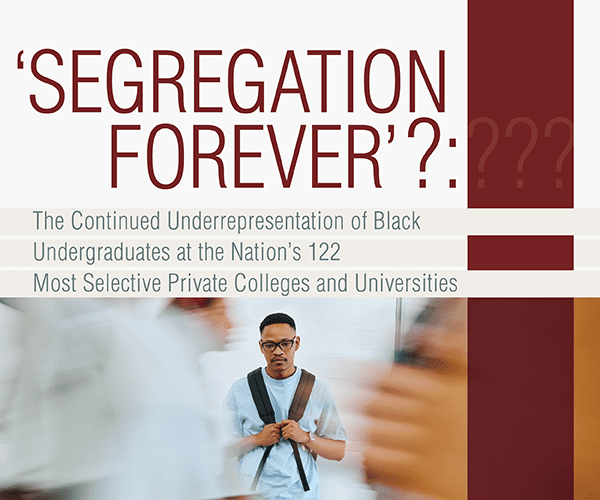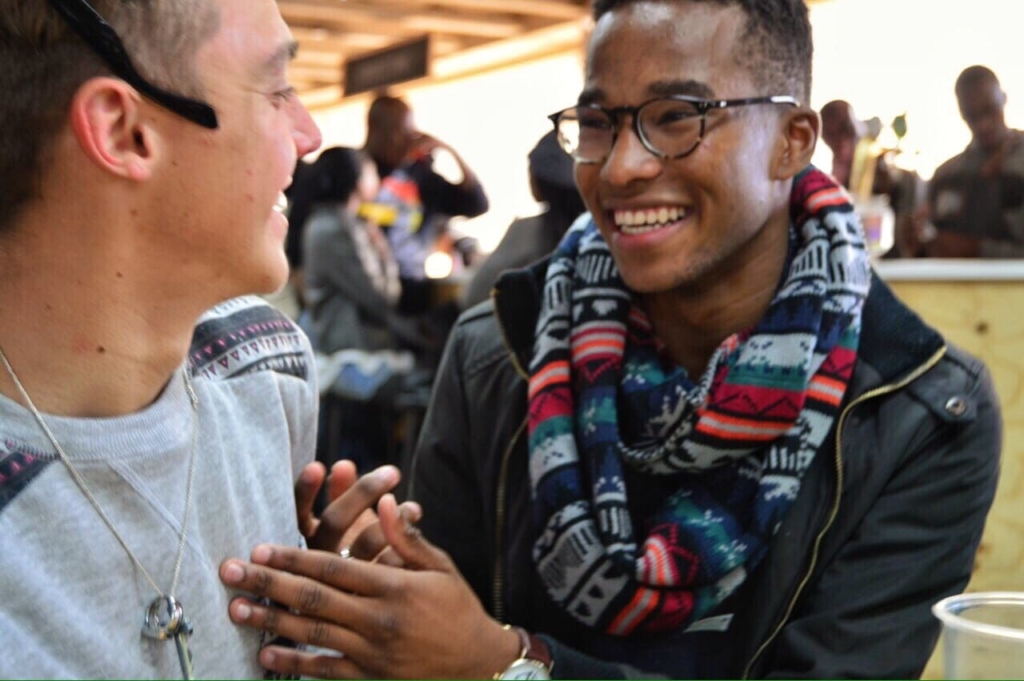Ed Trust calls on the nation’s 101 most selective public colleges to finally reflect U.S. racial diversity
Washington – While the COVID-19 pandemic and the killings of Breonna Taylor, George Floyd, Rayshard Brooks, Ahmaud Arbery, and countless others have shined a bright light on systemic racism in America, there is less awareness of the many ways systemic racism limits educational opportunity for Black and Latino people. A new report from The Education Trust exposes the continued and systematic exclusion of Black and Latino students from the most selective public colleges and universities in the country. The Education Trust challenges the nation’s top 101 public colleges to finally reflect the nation’s racial diversity.
‘Segregation Forever’? The Continued Underrepresentation of Black and Latino Undergraduates at the Nation’s 101 Most Selective Public Colleges and Universities relies on federal education and U.S. Census data to show that most of these prestigious and best-funded public colleges enroll a smaller percentage of Black students today than they did 20 years ago, and that while enrollment of Latino students has improved, most of these colleges are not keeping pace with Latino population growth.
Together, these 101 institutions of higher education would have to add about 200,000 Black students and nearly 200,000 Latino students to reflect the racial makeup of their states. Excluding so many Black and Latino students from these particular institutions of higher education deepens racial disparities in college completion, but also in household wealth, annual income, and countless other indicators of health and well-being that are influenced by earning a high-quality college degree.
The report takes its title from a not-so-long-ago moment in America’s history of racial injustice. Alabama Governor George Wallace proclaimed nearly 60 years ago: “Segregation now, segregation tomorrow, and segregation forever!” Tragically, Wallace’s proclamation appears today to be etched into the cornerstone of our nation’s most well-known public institutions of higher education.
“These last few months have shown to anybody paying attention that racism is alive and well in this country,” said Andrew Howard Nichols, PhD, senior director for research and data analytics at The Education Trust and the report’s author. “Racism permeates higher education, too. There is no acceptable reason in 2020 for the vast majority of these 101 public colleges to systematically exclude Black students like this — and to a great extent, Latino students as well. It is past time for public college presidents to take substantive anti-racist action that matches their soaring anti-racist rhetoric. It is past time for public college presidents to enroll and graduate students who represent the racial diversity of their state and of this nation.”
The report’s findings for the 101 most selective public colleges and universities in the U.S. include:
- Since 2000, the percentage of Black students has decreased at 6 out of 10 of these colleges.
- Only 9% of these colleges enroll representative numbers of Black students; just 14% of them enroll representative numbers of Latino students.
- The colleges in the states with the largest Black populations are the least accessible institutions for Black students.
- In the nine states where 75% of the nation’s Latinos live, 3 out of 4 of these colleges received a D or F grade for enrolling Latino students as compared with the state population.
The most selective colleges in California stand out for their widespread failure to enroll Black and Latino students in numbers that represent California’s diversity.
“The exclusion of Black and Latinx students from selective colleges and universities is nothing short of a crisis,” said University of California Student Association President Varsha Sarveshwar. “In this report, 7 out of 9 UC undergraduate campuses receive D and F grades in access for Black and Latinx students. Higher education leaders and policymakers must move beyond public commitments to diversity — and act decisively to ensure that access is truly equitable.”
California voters will decide in November whether to overturn the state’s ban on affirmative action.
Only a few of these 101 institutions stood out for equitable enrollment of Black and Latino students. University at Albany, part of the State University of New York (SUNY) system, topped the list for enrolling Black students in representative numbers. While 16% of New York residents are Black, 17% of University at Albany students are Black. And the institution is redoubling its commitment to racial equity at this time of national crisis.
“We’ve been systematically addressing the issues our student leaders have highlighted, in terms of the campus climate, in terms of diversity, equity, and inclusion,” said University at Albany President Havidán Rodríguez, the first Latino president in the State University of New York system. “With the protests that have emerged, students continue to increase pressure on the institution, as they should, to hold our feet to the fire. All of us presidents have put out strong, bold statements against racism, as we should. But once the protests subside, once the media diverts their attention to the next crisis, how will we measure the progress that we’ve made? What’s going to be the sustainable, long-lasting, impactful change? That is the challenge before us. That’s what we need to focus on.”
‘Segregation Forever’? concludes with 10 recommendations for college leaders and policymakers — including governors and state legislators — to make good on their pledges to advance racial equity:
- Adopt statewide and institutional goals to increase access
- Increase access to high-quality guidance counselors
- Use race more prominently in admissions decisions
- Rescind state bans on affirmative action
- Increase financial aid to Black and Latino students
- Alter recruitment strategies
- Improve campus racial climates
- Use outcomes-based funding policies equitably
- Leverage federal accountability
- Reduce the role of standardized testing and/or consider making tests like SAT and ACT optional
One tactic these 101 institutions could use to increase enrollment of Black and Latino students is boosting their recruitment of students who started their higher education at community colleges.
“Too often students of color do not see themselves on a pathway to a baccalaureate degree and beyond,” said Walter G. Bumphus, president and CEO of the American Association of Community Colleges. “Community colleges are a great beginning and we know students often perform well upon transfer to a university. Recruiting students of color to the nation’s finest universities is the first step to balancing the scales of success for all students. Creating clear pathways and intentional strategies for supporting the success of transfer students of color is critical to that success.
Community colleges stand ready to work together to envision and create complete pathways that allow students of color to clearly see the possibilities that only education can provide.”
Many state higher education leaders already have made advancing racial equity a priority for their public colleges and universities and are seizing upon this moment of national reckoning on racism to do more. All state leaders should follow suit.
“For too long, students of color have experienced disparities in their ability to gain access to higher education,” said Ginger Ostro, executive director of the Illinois Board of Higher Education. “In Illinois, we are committed to removing those barriers, both explicit and implicit, to guarantee all students benefit from our world-class colleges and universities. We are taking a hard look at the data, evaluating our practices, and making the deep changes needed to create an even playing field for Black and Latinx students in Illinois. Equity must drive everything we do.”
###

 July 21, 2020 by
July 21, 2020 by 




